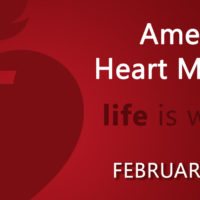
Congresswoman Uifa’atali Amata is emphasizing American Heart Month and highlighting Friday’s nationwide efforts to wear red to bring awareness to heart health issues.
“Heart disease is the leading cause of death in our nation and is a major health need in American Samoa,” said Uifaatali. “This important month focuses on cardiovascular risks and diseases, along with treatment, rapid response to any health incident, and best practices for prevention and recovery. Mostly, with this February focus, we think of all those who have lost a loved one to stroke or heart disease.”
In the 2023 Appropriations, passed in December, Congress approved new funding for cardiovascular research, including the Million Hearts program, a five-year program with the goal of reducing one million heart attacks and strokes, and funded by federal agencies that have different roles on these issues. These include National Institutes of Health (NIH); National Heart, Lung, and Blood Institute (NHLBI); and the Centers for Disease Control and Prevention (CDC).
President Biden has officially proclaimed February as American Heart Month, comprising all elements of heart disease and stroke, and Acting Governor Talauega Eleasalo Ale has declared Heart Month for the territory.
Additionally, Friday is National Wear Red Day, putting focus on heart disease factors among women, while different weeks and days throughout the month focus on various aspects of the overall effort to improve heart health, raising awareness and pointing out sources of services and information.
Among medical risk factors are obesity, diabetes, and high blood pressure, but heart disease can affect someone with no known risk factors.
Along with this month’s campaigns like “Get Our Hearts Pumping” NIH encourages 2.5 hours weekly of activity ranging from walking to other fitness activities for those who can safely do so.
Throughout the month, health organizations and government agencies will highlight different areas or risk populations, such as elderly, or the reality of families with children facing heart problems from birth or a very young age.



